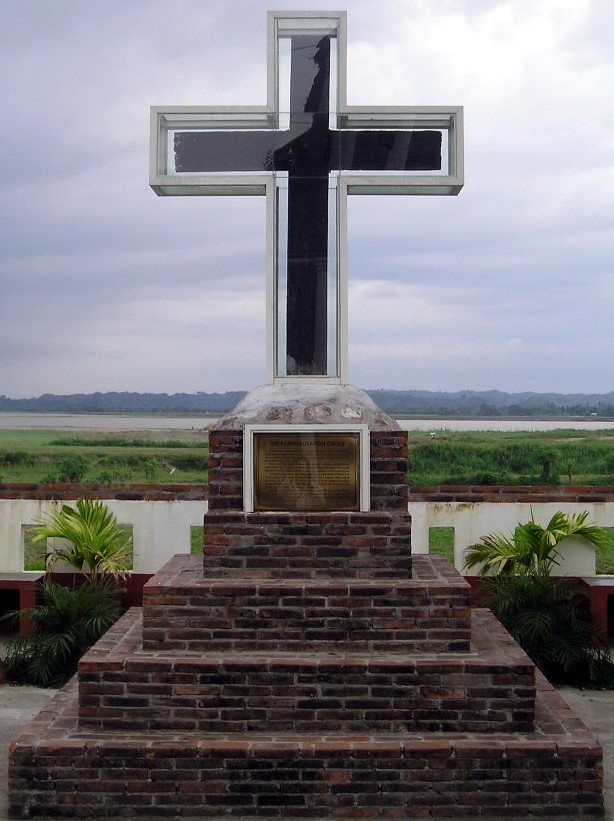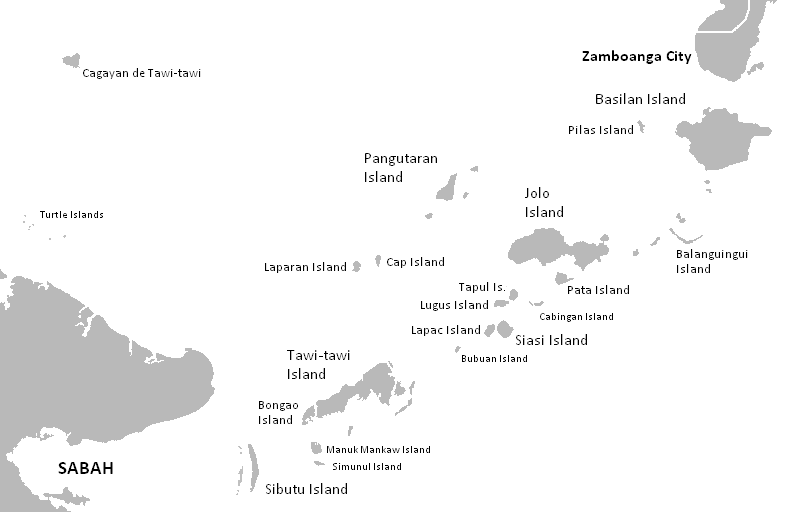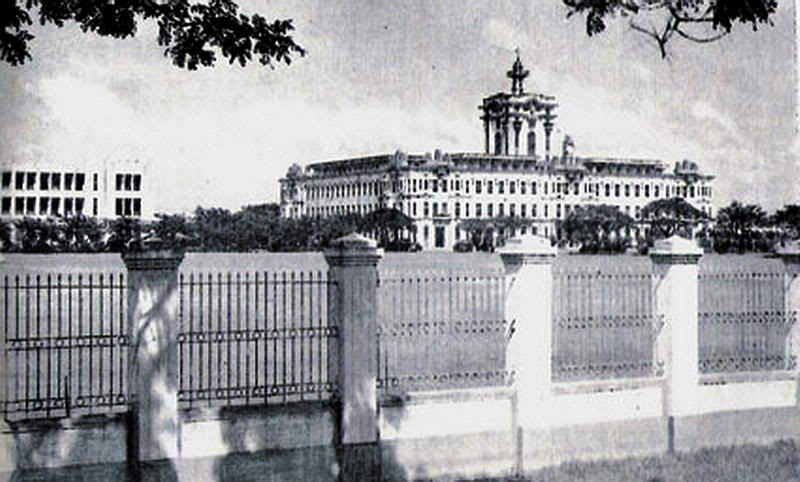|
Juan De Arechederra
Juan de Arechederra, O. P. (Caracas, Venezuela, September 20, 1681 – Nueva Segovia, November 12, 1751) was a Venezuelan (originally Spanish Criollo) friar and member of the Dominican Order who served as the Rector of the University of Santo Tomas from 1735 to 1737 and from 1743 to 1745 and Bishop-elect of Nueva Segovia from 1745 and in turn, the Bishop from 1750 until his death in 1751. In Philippine history, he is best remembered as being the Governor-General from 1745 to 1750 who baptized Alimuddin I, the only Catholic Sultan of Sulu. Early life and activities Little was known about Arechederra's early life. He was born to Spanish immigrant parents but was later sent to a convent in San Jacinto de Caracas, a city-colony at the Spanish colonial provinces of New Kingdom of Granada. In 1701, he joined the Dominican Order for the province of Santa Cruz, his hometown. He went to Mexico to pursue a degree of doctor of theology at the Royal and Pontifical University of Mexic ... [...More Info...] [...Related Items...] OR: [Wikipedia] [Google] [Baidu] |
Dominican Order
The Order of Preachers ( la, Ordo Praedicatorum) abbreviated OP, also known as the Dominicans, is a Catholic mendicant order of Pontifical Right for men founded in Toulouse, France, by the Spanish priest, saint and mystic Dominic of Caleruega. It was approved by Pope Honorius III via the papal bull ''Religiosam vitam'' on 22 December 1216. Members of the order, who are referred to as ''Dominicans'', generally carry the letters ''OP'' after their names, standing for ''Ordinis Praedicatorum'', meaning ''of the Order of Preachers''. Membership in the order includes friars, nuns, active sisters, and lay or secular Dominicans (formerly known as tertiaries). More recently there has been a growing number of associates of the religious sisters who are unrelated to the tertiaries. Founded to preach the Gospel and to oppose heresy, the teaching activity of the order and its scholastic organisation placed the Preachers in the forefront of the intellectual life of the Middle Ag ... [...More Info...] [...Related Items...] OR: [Wikipedia] [Google] [Baidu] |
Lal-Lo, Cagayan
Lal-lo, officially the Municipality of Lal-Lo ( ibg, Ili nat Lal-lo; ilo, Ili ti Lal-lo; tl, Bayan ng Lal-lo), is a 1st class municipality in the province of Cagayan, Philippines. According to the 2020 census, it has a population of 48,733 people. During the Spanish colonial period, Lal-lo was known as Ciudad de Nueva Segovia and was the seat of the Diocese of Nueva Segovia before it was moved to Vigan in Ilocos Sur. It is currently under efforts to regain its Spanish-era city status. Recently, the provincial government of Cagayan through the leadership of Governor Manuel Mamba is planning to make Lal-lo the provincial capital of Cagayan again. An international airport was built in the southern part of Lal-lo. The Northern Cagayan International Airport is constructed to support the Cagayan Special Economic Zone in northern Cagayan and will also serve the seaborne traffic through Port Irene. The airport project involves the construction of a 2,200-meter runway, with a width o ... [...More Info...] [...Related Items...] OR: [Wikipedia] [Google] [Baidu] |
Colegio De San Juan De Letran
The Colegio de San Juan de Letran, (transl: College of San Juan de Letran) also referred to by its acronym CSJL, is a private Catholic coeducational basic and higher education institution owned and run by the friars of the Order of Preachers in Intramuros, Manila, Philippines. It was founded in 1620. Colegio de San Juan de Letran has the distinction of being the oldest college in the Philippines and the oldest secondary institution in Asia. The school has produced Philippine presidents, revolutionary heroes, poets, legislators, members of the clergy, jurists, and it is also one of the only Philippine schools that has produced several Catholic saints who lived and studied on its campus. The school's patron saint is St. John the Baptist. The campus contains two statues, representing the two foremost alumni in the fields of secular and religious service: former Philippine President Manuel L. Quezon and Vietnamese Saint Vicente Liem de la Paz. Letran has programs in Business, Manag ... [...More Info...] [...Related Items...] OR: [Wikipedia] [Google] [Baidu] |
Cavite
Cavite, officially the Province of Cavite ( tl, Lalawigan ng Kabite; Chavacano: ''Provincia de Cavite''), is a province in the Philippines located in the Calabarzon region in Luzon. Located on the southern shores of Manila Bay and southwest of Manila, it is one of the most industrialized and fastest-growing provinces in the Philippines. As of 2020, it has a population of 4,344,829, making it the most populated province in the country if the independent cities of Cebu are excluded from Cebu's population figure. The ''de facto'' capital and seat of the government of the province is Trece Martires, although Imus is the official (''de jure'') capital while the City of Dasmariñas is the largest city in the province. For over 300 years, the province played an important role in both the country's colonial past and eventual fight for independence, earning it the title "Historical Capital of the Philippines". It became the cradle of the Philippine Revolution, which led to the r ... [...More Info...] [...Related Items...] OR: [Wikipedia] [Google] [Baidu] |
Vicar
A vicar (; Latin: ''vicarius'') is a representative, deputy or substitute; anyone acting "in the person of" or agent for a superior (compare "vicarious" in the sense of "at second hand"). Linguistically, ''vicar'' is cognate with the English prefix "vice", similarly meaning "deputy". The title appears in a number of Christian ecclesiastical contexts, but also as an administrative title, or title modifier, in the Roman Empire. In addition, in the Holy Roman Empire a local representative of the emperor, perhaps an archduke, might be styled "vicar". Roman Catholic Church The Pope uses the title ''Vicarius Christi'', meaning the ''vicar of Christ''. In Catholic canon law, ''a vicar is the representative of any ecclesiastic'' entity. The Romans had used the term to describe officials subordinate to the praetorian prefects. In the early Christian churches, bishops likewise had their vicars, such as the archdeacons and archpriests, and also the rural priest, the curate who had the ... [...More Info...] [...Related Items...] OR: [Wikipedia] [Google] [Baidu] |
Royal And Pontifical University Of Mexico
The Royal and Pontifical University of Mexico (in es, Real y Pontificia Universidad de México) was founded on 21 September 1551 by Royal Decree signed by Charles V, Holy Roman Emperor, Charles I of Spain, in Valladolid, Spain. It is generally considered the first university officiallyFounded by Royal Decree of Charles I of Spain on September 12, 1551. founded in North America and second in the Americas (preceded by the National University of San Marcos in Lima, Peru, chartered on May 12 of the same year). After the Mexican War of Independence it was renamed University of Mexico. When Mexican liberals were in power at intervals in the nineteenth century, it was closed, since liberals sought to put education in the hands of the state rather than the Roman Catholic Church. Its first closure was in 1833, when Valentín Gómez Farías implemented liberal policies. When Antonio López de Santa Anna returned to power, the university was reopened. It was finally abolished in 1865 during ... [...More Info...] [...Related Items...] OR: [Wikipedia] [Google] [Baidu] |
Mexico
Mexico (Spanish: México), officially the United Mexican States, is a country in the southern portion of North America. It is bordered to the north by the United States; to the south and west by the Pacific Ocean; to the southeast by Guatemala, Belize, and the Caribbean Sea; and to the east by the Gulf of Mexico. Mexico covers ,Mexico ''''. . making it the world's 13th-largest country by are ... [...More Info...] [...Related Items...] OR: [Wikipedia] [Google] [Baidu] |
New Kingdom Of Granada
The New Kingdom of Granada ( es, Nuevo Reino de Granada), or Kingdom of the New Granada, was the name given to a group of 16th-century Spanish colonial provinces in northern South America governed by the president of the Royal Audience of Santafé, an area corresponding mainly to modern-day Colombia. The conquistadors originally organized it as a province with a Royal Audience within the Viceroyalty of Peru despite certain independence from it. The was established by the crown in 1549. Ultimately the kingdom became the Viceroyalty of New Granada first in 1717 and permanently in 1739. After several attempts to set up independent states in the 1810s, the kingdom and the viceroyalty ceased to exist altogether in 1819 with the establishment of the United Provinces of New Granada. History Discovery and settlement In 1514, the Spanish first permanently settled in the area. With Santa Marta (founded on July 29, 1525 by the Spanish ''conquistador'' Rodrigo de Bastidas) and Cartage ... [...More Info...] [...Related Items...] OR: [Wikipedia] [Google] [Baidu] |
Sultan Of Sulu
The Sultanate of Sulu ( Tausūg: ''Kasultanan sin Sūg'', كاسولتانن سين سوڬ; Malay: ''Kesultanan Sulu''; fil, Sultanato ng Sulu; Chavacano: ''Sultanato de Sulu/Joló''; ar, سلطنة سولك) was a Muslim state that ruled the Sulu Archipelago, parts of Mindanao and certain portions of Palawan in today's Philippines, alongside parts of present-day Sabah, North and East Kalimantan in north-eastern Borneo. The sultanate was founded either on 17 November 1405 or 1457 by Johore-born explorer and religious scholar Sharif ul-Hashim. ''Paduka Mahasari Maulana al Sultan Sharif ul-Hashim'' became his full regnal name, ''Sharif-ul Hashim'' is his abbreviated name. He settled in Buansa, Sulu. After the marriage of Abu Bakr and a local ''dayang-dayang'' (princess) Paramisuli, he founded the sultanate. The sultanate gained its independence from the Bruneian Empire in 1578. At its peak, it stretched over the islands that bordered the western peninsula of Zamboanga in ... [...More Info...] [...Related Items...] OR: [Wikipedia] [Google] [Baidu] |
Azim Ud-Din I Of Sulu
Muhammad Azim ud-Din I ( ar , مُحَمَّدعلیم الدین, Jawi script, Jawi:محمدعلیم الدیند also Muhammad Alimuddin; Religious Name, Christian Name: Don Fernando de Alimuddin) was Sultan of Sultanate of Sulu, Sulu from 1735 to 1748, and again from 1764 until his abdication in 1774. He was briefly converted to Catholic Church, Catholicism under the name Fernando until he returned to Sulu and reverted to Islam, dying as a Muslim. Early life The young Alimuddin initially attended the school of his father, Bahar ud-Din I of Sulu, Badar ud-Din I, and was later sent to Jakarta, Batavia, Dutch East Indies, to complete his education. There he became proficient in Arabic language, Arabic and Bahasa Melayu, Malay, and gained mastery of the Qur'an. First reign Azim ud-Din I acceded the throne in 1732 after his father abdicated, but only assumed full powers and formal recognition in 1735 when his cousin, Nasar ud-Din, abandoned claims to the throne. One of the e ... [...More Info...] [...Related Items...] OR: [Wikipedia] [Google] [Baidu] |
Governor-General Of The Philippines
The Governor-General of the Philippines (Spanish: ''Gobernador y Capitán General de Filipinas''; Filipino: ''Gobernador-Heneral ng Pilipinas/Kapitan Heneral ng Pilipinas''; Japanese: ) was the title of the government executive during the colonial period of the Philippines, governed by Mexico City and Madrid (1565–1898) and the United States (1898–1946), and briefly by Great Britain (1762–1764) and Japan (1942–1945). They were also the representative of the executive of the ruling power. On November 15, 1935, the Commonwealth of the Philippines was established as a transitional government to prepare the country for independence from American control. The governor-general was replaced by an elected Filipino " President of the Philippine Commonwealth", as the chief executive of the Philippines, taking over many of the duties of the Governor-General. The former American Governor-General then became known as the High Commissioner to the Philippines. From 1565 to 1898, ... [...More Info...] [...Related Items...] OR: [Wikipedia] [Google] [Baidu] |
University Of Santo Tomas
The University of Santo Tomas (also known as UST and officially as the Pontifical and Royal University of Santo Tomas, Manila) is a private, Catholic research university in Manila, Philippines. Founded on April 28, 1611, by Spanish friar Miguel de Benavides, third Archbishop of Manila, it has the oldest extant university charter in the Philippines and in Asia, and is one of the world's largest Catholic universities in terms of enrollment found on one campus. It is the main campus of the University of Santo Tomas System that is run by the Order of Preachers. UST was granted the title “Royal” by King Charles III of Spain in 1785. Pope Leo XIII made UST a "Pontifical" university in 1902. Pope Pius XII bestowed upon UST the title of “The Catholic University of the Philippines” in 1947. UST houses the first and oldest engineering, law, medical, and pharmacy schools in the country. The main campus is the largest university in the city of Manila and is home to 22 degree-gran ... [...More Info...] [...Related Items...] OR: [Wikipedia] [Google] [Baidu] |







